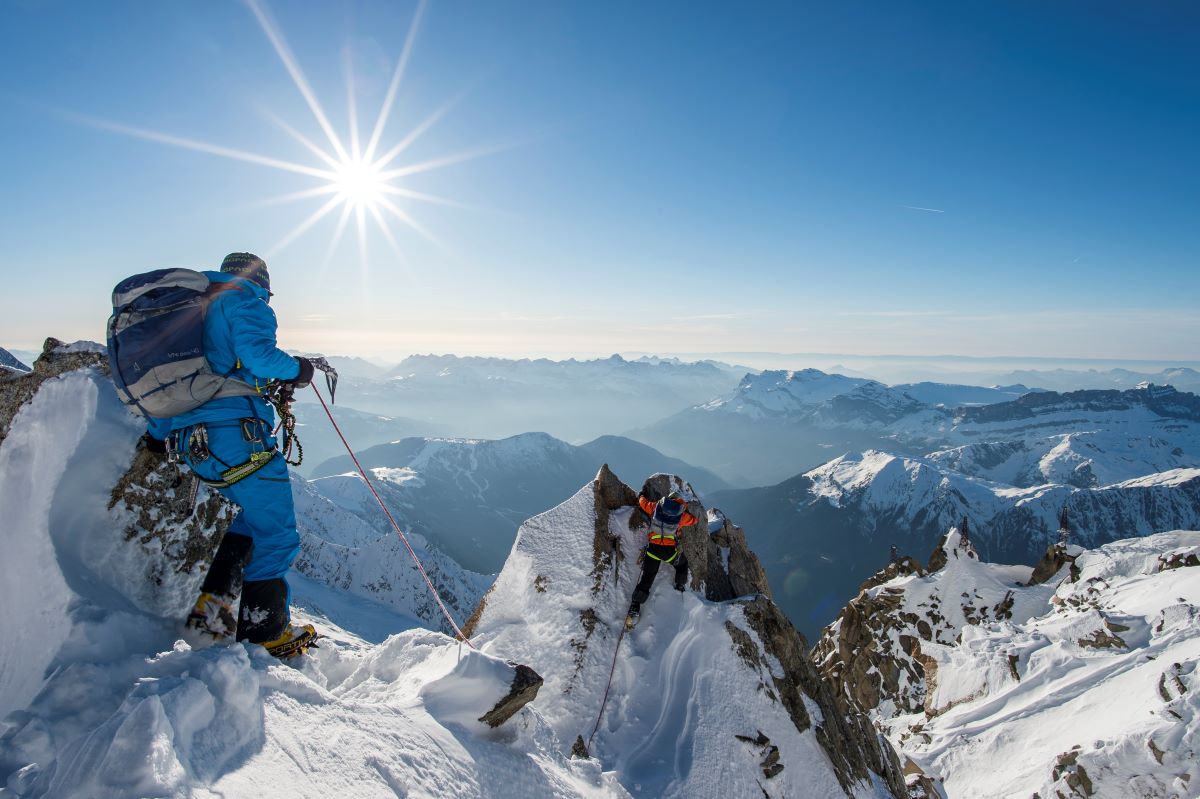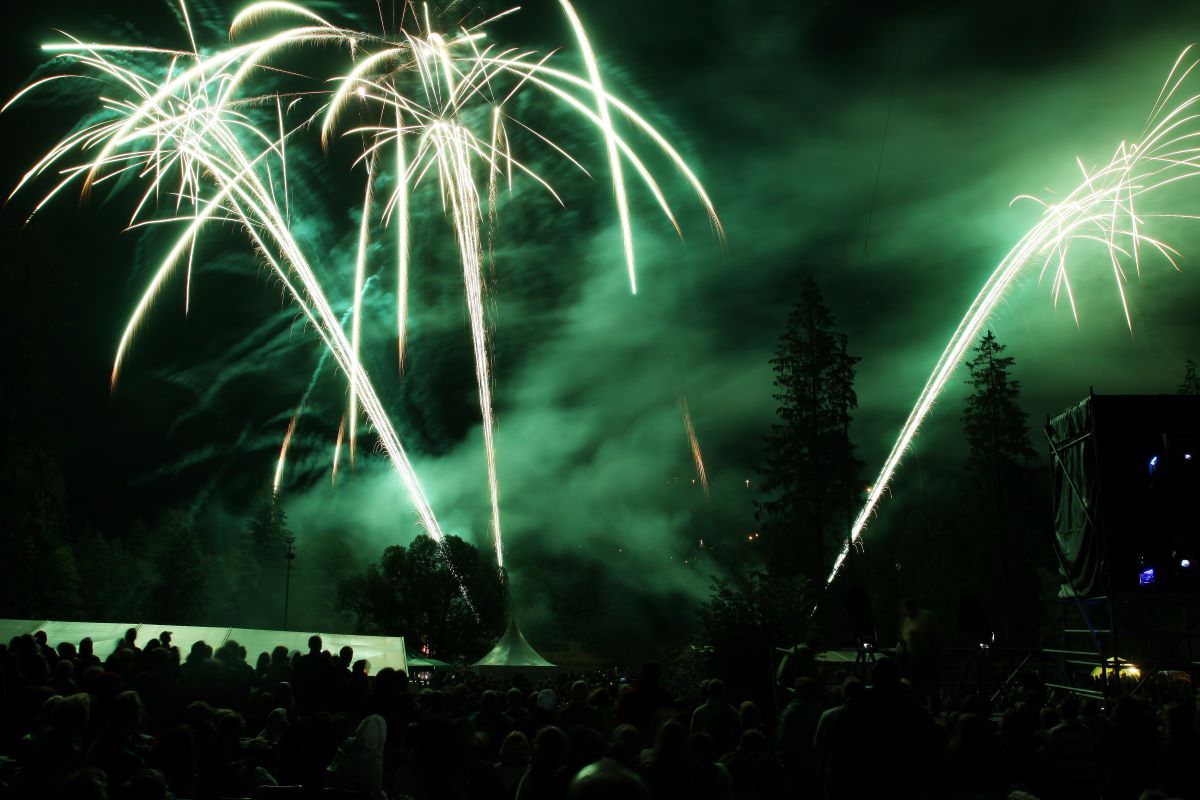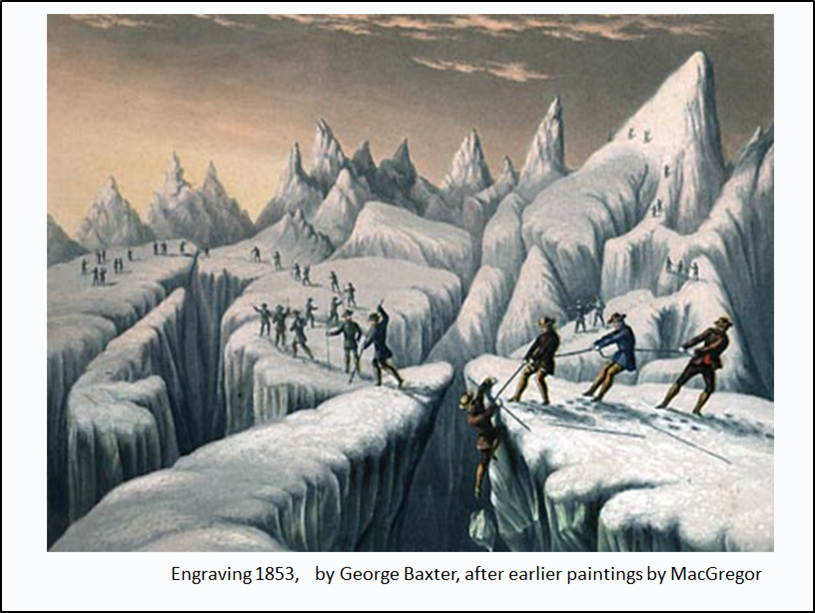The 200th anniversary of the Compagnie des Guides de Chamonix

This summer will be punctuated by a programme of events to celebrate the 200th birthday of the oldest mountain guiding company in the world.
Rope-up and discover the programme of events
1821 - 2021: A rope across the centuries
The Compagnie des Guides de Chamonix embodies over 200 years of mountain history, of friendships and exploration, always with the vocation of providing its clients with a human and sporting adventure in a "world above the world".
"Indeed it is through the clients that we exist and it is they who create our profession. The guide is there to facilitate the approach to new horizons, to enable dreams to become objectives and then reality ”. Olivier Gréber, President of the Guides' Company
The oldest company of high mountain guides in the world was founded in Chamonix in 1821. 200 years later, the organization counts 180 high mountain guides and 60 mid-mountain guides. Since its creation, the Compagnie des Guides de Chamonix has always been a pioneer. Its members have actively participated in making the history of mountain sports by showing commitment, imagination and innovation.
1741 - 1821: The beginnings
It is often considered that it all began in 1741 when two great British explorers expressed their fascination with the region's “glacieres” and in particular the Mer de Glace. The number of visitors then increased rapidly and the inhabitants of the “village” of Chamonix, already hunters and crystal-seekers, naturally became local guides.
The Compagnie des Guides de Chamonix was created in 1821 following an accident on Mont Blanc where guides Auguste Tairraz, Pierre Balmat and Pierre Carrier lost their lives. A solidarity fund was set up to help the bereaved families and a principle of equitable distribution of work was established: the Caisse de Secours and the Tour de Rôle were born. The Company initially had 34 members including Jacques Balmat who made the very first ascent of Mont Blanc in 1786.
1821-1865: The Conquest
This period is marked by a real infatuation of the Anglo-Saxon professional classes for the high mountains. Most of the Alps are unexplored and unmapped and the conquest of summits is in full swing. The decade 1855-1865 is considered the "golden age of mountaineering" because it is undoubtedly the most prolific period in the history of mountaineering.
Michel Croz and his English client Edouard Whymper are certainly one of the most famous roped parties of the time. In 1865, they made the first ascent of the Aiguille Verte, the Grandes Jorasses and the Matterhorn, where Michel Croz tragically died on the descent.
1865-1940: Diversification
Once the main peaks had been climbed by their normal routes, mountaineers turned to more technical routes. Little by little, the high mountains became more democratic and the first climbing parties without guides emerged. The profession of guide was also beginning to attract men who were not native to mountain valleys.
In 1930, Roger Frison Roche became the first “foreign” guide to join the Company. He was also a journalist and author and his mountain novels still deeply mark the collective imagination. Armand Charlet, nicknamed the "Prince of Guides", remains the emblematic figure of the interwar period. He made countless ascents both with clients and as an amateur, notably with Camille Devouassoux. His favourite summit was the Aiguille Verte which he climbed 100 times!
1945-1974: Adventure
As ascents became more and more technical and committed, they were most often carried out guides who climbed without clients. Expeditions to different continents took hold. In 1950, the guide Louis Lachenal (with Maurice Herzog) made the first ascent of Annapurna and France claimed the trophy of the first 8000. Gaston Rébuffat, Lionel Terray, Gérard Devouassoux, Georges Payot and René Desmaison to name but a few were also particularly active in the Alps and abroad.
The development of ski lifts in the Chamonix Valley (Aiguille du Midi in 1955 and Grands Montets in 1964) made the high mountains more accessible, although the profession of guide was still mainly a summer activity and therefore often combined with another activity.

1974 - today: The Metamorphosis
With the development of winter tourism, the profession of guide began to be exercised all year round, allowing guides to become mono-active. In parallel with the traditional activities practiced in the high mountains, new activities emerged: trekking, white water, canyoning, via ferrata ... In order to respond to changing demand, the Company opened its ranks to professional mountain leaders, which necessitated a profound administrative reorganisation.
To this day, the guides of the Company are totally committed to the great achievements of the association, combining technical excellence and exploration. Christophe Profit made his mark with his solitary climbs and his incredible sequences. Thierry Renault and Alain Ghersen stand out with their very high level climbs. Jérôme Ruby and Dédé Rhem performed extraordinary snowboard descents...
The guides and mountain leaders are essentially travellers, who regularly visit the faraway massifs. Some have created associations to help mountain populations on other continents and their actions are supported by the Compagnie des Guides: Julien Héry in Pakistan, Jean Raphoz in Nepal ...
Among the guides today, many stand out for their high level amateur achievements: Vivien Bruchez, Julien Héry, Yannick Gradziani, Fanny Scmutz ...
Becoming a Mountain Guide
Over the centuries we retain many colourful nicknames that punctuate the wonderful legacy of Chamonix guides: Cachat "The Giant", Cupelin “Captain of Mont Blanc”, Couttet “Baguette”, Ravanel le Rouge “Guide of Kings”, Couttet “Champion”…
Since its beginnings, the profession of guide has evolved considerably. Initially the transmission was made by "companionship", that is to say that apprentice guides were first mule drivers and then porters who assisted the guides. It was only in 1948 that the training of guides became regulated with the creation of the ENSA (National School of Skiing and Mountaineering) in Chamonix.
The practical and theoretical training provided by ENSA lasts a minimum of five years. A probationary examination gives access to the status of aspiring guide and a state diploma formalizes the title of High Mountain Guide.
To differentiate the profession of high mountain guide and that of medium mountain guide (AMM), the former evolves in environments requiring equipment and techniques specific to mountaineering (roping, crampons, ice axes, etc.), while the latter guides in mid-mountain environments where the accent is on natural heritage, fauna and flora. Both professions require excellent sporting condition.
While women are in the majority among the mid-mountain guides, they are very much in the minority among high-mountain guides. Only six are members of the Company in 2021, which is nevertheless significantly higher than the proportion within the profession. On average, three to five new professionals join the Compagnie des Guides each year.
Looking to the future
"We must combine tradition with modernity. In other words, appose our history, our know-how and the expectations of our customers. Of course mountaineering is essential, but the demand is much broader: climbing, canyoning, via ferrata, multi-activity courses ... We also see an expectation for new practices: Chamonix - Zermatt in fast mode (three days) or summer climbs also at speed! We also have an important role to play in the transmission of techniques and knowledge. We run preparation courses for the aspiring guide; we will certainly develop this type of training more. I remember that one day, with a client, I was sick. I was happy that my client was to a degree autonomous; it really helped me. We must also, for example, ask ourselves the question of access to the mountain for people who sometimes only know the artificial climbing structures (SAE): how to facilitate the transition from "town climbing" to the high mountains?
The mountain is plural and the Company today must be so too. From the mountain leader passionate about the natural environment to the gifted young high-mountain guide dreaming of "the Walker with client" or the seasoned guide with his unique experience, each member must be able to find his place in the structure. This is our worth and indeed our strength! "
David Ravanel, former president of the Compagnie des Guides and co-author of the book "200 ans d'histoire (s)" published on May 19, 2021 by Editions Glénat.
GUIDES' FESTIVAL
The first Fête des Guides took place on August 15 1924, under the patronage of the wife of famous perfume maker François Coty. Historically counting on the protection of the Blessed Virgin, the guides naturally chose the day of the Assumption for their festival. The objective of this first celebration was to raise funds for the Caisse de Secours (solidarity fund), whose contributions had become insufficient to cover the needs.
Almost a century later, the purpose of the Guides' Festival has not changed. In the heart of summer, members, volunteers and local businesses rally together for the benefit of the Caisse de Secours in a spirit of sharing and solidarity. The days preceding August 15, animations are organized in all the villages of the valley. Activities, conferences, shows, parades, tributes and speeches celebrate the mountain and its actors in a festive and friendly atmosphere.

